
3 minute read
Context
Context
Cities are characterised by the hard and vertical surfaces of building façades, which from an evolutionary point of view ‘have many of the same macro- and micro-habitats, and many of the same plants, as natural cliff faces’. According to the urban cliff hypothesis, ‘cliffs, talus and other rock outcrops represent a marginal, unproductive refuge habitat that gave rise to… humans and their commensals and mutualists’ (Larson et al. 2004).
At the same time, urban ‘cliffs’ share characteristics with deserts: very low-nutrient conditions, extreme surface temperatures, desiccation through evaporation or rainwater run-off, and material alkalinity. Plants occupying such surfaces share features with desert species: ‘(1) shallow roots and a high root:shoot ratio; (2) higher water stress and heat tolerances; (3) small leaves that closely track air temperature; … (5) low photosynthetic and growth rates; (6) opportunistic phenologies; and (7) a regular spatial pattern’ (Smith et al. 1996).
Façades are therefore extreme environments of which morphological variance is of huge importance: they define a micro-environmental heterogeneity that influences the deposition of organic matter and the accretion of micro-substrates upon which islands of species can thrive (Smith et al. 1996). They also offer micro- and mesoconcavities in which new ‘urban habitat templates’ (Lundholm 2006) for cryptogamic growth can emerge.



10 Clockwise from top left: cryptogamic surface cover on tree bark, Regent’s Park, London; bioreceptive wall in Lisbon; and two bioreceptive walls in London.
In the 1990s, Belgian biochemical engineer, Olivier Guillitte, defined ‘bioreceptivity’ as the phenomenon of materials being biocolonised without biodeterioration (Guillitte 1995). He categorised four types, all of which enhance cryptogamic growth on walls: · ‘primary or intrinsic’: the initial phase of material biocolonisation; · ‘secondary’: biocolonisation that changes over time due to external factors; · ‘tertiary’: biocolonisation that is promoted due to human activity; · ‘extrinsic’: biocolonisation due to the external deposits of dust and organic particles upon which plants thrive.
11 Clockwise from top left: three details of an expanded cork agglomerate north-facing façade with evidence of at least six different lichen types, Pavilhão Centro de Portugal, Coimbra; ornamental concrete sculpture, Giardini della Biennale, Venice; two details of an ornamental sandstone wall, Convento de Cristo, Tomar.
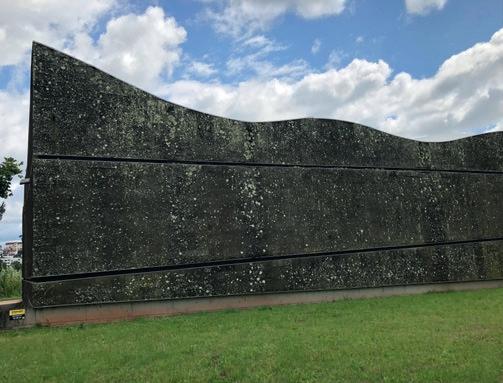


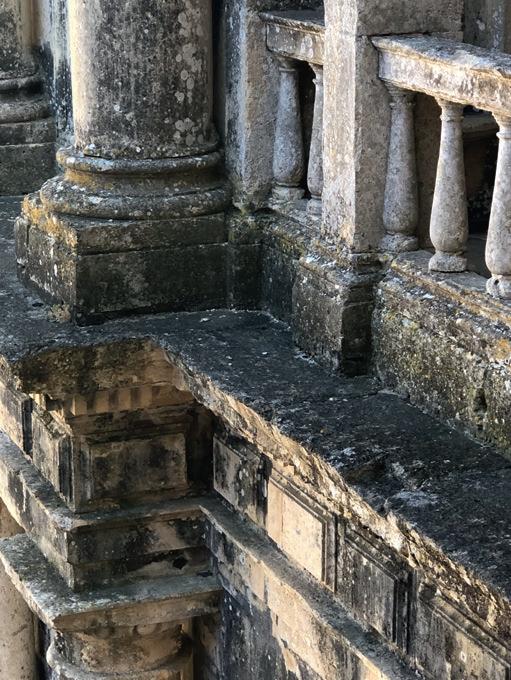
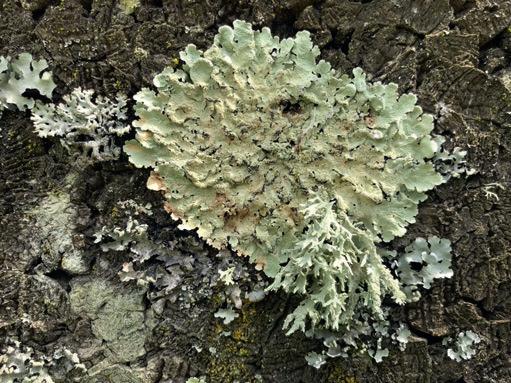
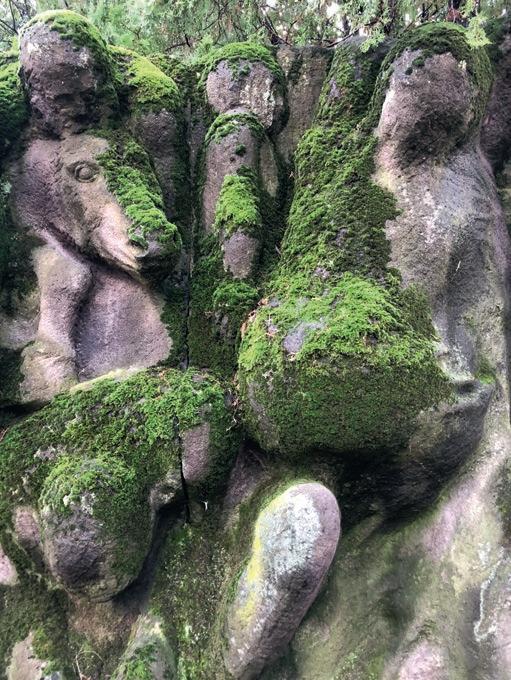
Researchers from the Max Planck Society and University of Kaiserslautern found that cryptogamic cover amounts to 7% of net global primary production of carbon uptake by terrestrial vegetation, while accounting for nearly half of biological nitrogen fixation on land (Elbert et al. 2012). Algae and moss absorb large amounts of pollution as they lack protective cuticles on their surfaces and leaves.
Designing façades to accommodate cryptogams is challenging as irregularity and unpredictability of growth contradicts a sense of order and clarity of geometric form; an ‘aesthetic of cleanliness’ (Vigarello 1988) and ‘purity’ (Forty 2000) still remains the ideal in design. The scattered occurrence of growth patches resembles blotching in human skin. It is regarded as potentially pathological, ‘matter out of place’ as defined by the anthropologist Mary Douglas (1966), and promotes impure aesthetics. Meanwhile, biophilic design establishes new aesthetic criteria in terms of scale and gradient of pattern, tectonic readability, transition between material and biology, visual response to living and dead biomass, chromatic value, depth and shading.

12 Transplanted moss on bioreceptive components and panels installed at The Bartlett, UCL.
13 Spontaneous algae and moss growth on bioreceptive components.



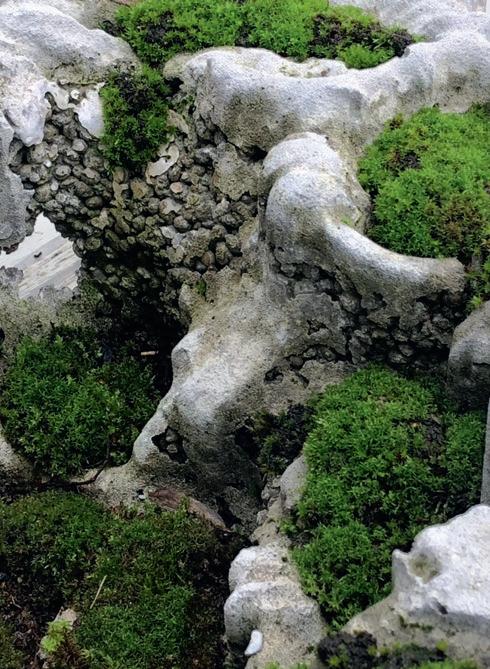
13



